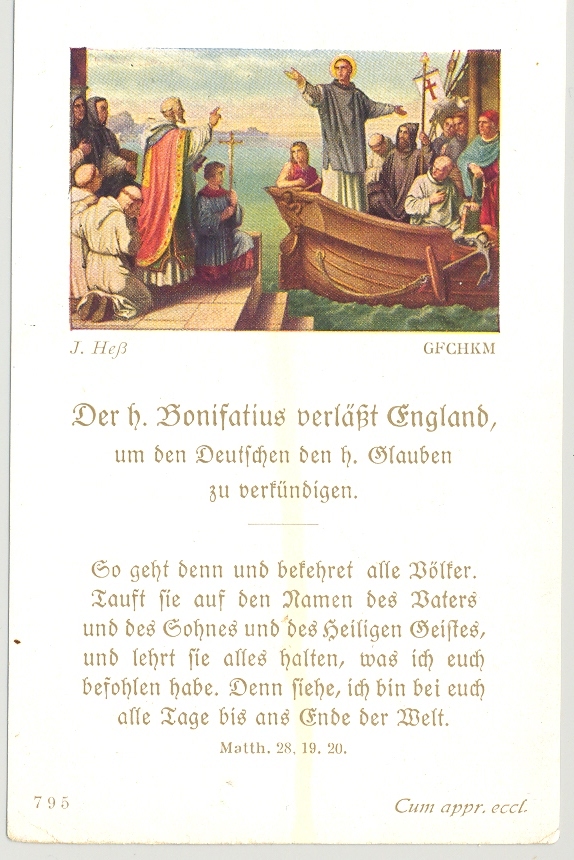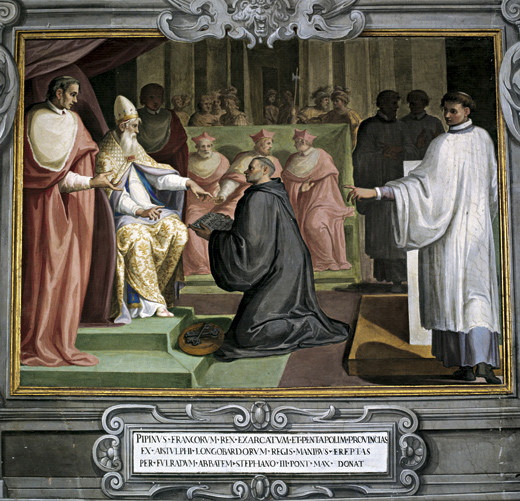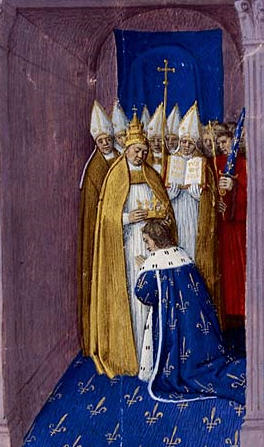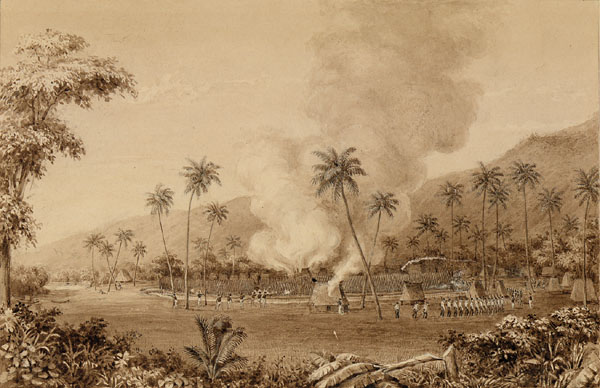|
Hildegar (bishop Of Cologne)
Hildegar (also Hildiger or Hildeger; died 8 August 753) was the bishop of Cologne from 750. Probably of noble birth, he was a supporter of the Carolingians, who displaced the Merovingians in 751. After the appointment of Eoban to the diocese of Utrecht by the missionary bishop Boniface, Hildegar claimed metropolitan rights over the see. Boniface denied the charge in a letter to Pope Stephen II, although Marco Mostert has indicated that Boniface's narrative and arguments are flawed, if not outright lies. After a group of Saxons ravaged Francia, burning thirty churches, King Pippin the Short led a punitive expedition with "a large siege train" (''magno apparatu'') against them. Hildegar took part in the war and died defending the fortress (''castrum'') of Juberg or Iburg (''Ihburg'') near Osnabrück Osnabrück (; ; archaic English: ''Osnaburg'') is a city in Lower Saxony in western Germany. It is situated on the river Hase in a valley penned between the Wiehen Hills and t ... [...More Info...] [...Related Items...] OR: [Wikipedia] [Google] [Baidu] |
Bishop Of Cologne
The Archbishop of Cologne governs the Roman Catholic Archdiocese of Cologne in western North Rhine-Westphalia. Historically, the archbishop was ''ex officio'' one of the prince-electors of the Holy Roman Empire and ruled the Electorate of Cologne. Since the early days of the Catholic Church, there have been 94 bishops and archbishops of Cologne. roue of them resigned n response to impeachment. Eight were coadjutor bishops before they took office. Seven were appointed as coadjutors freely by the pope. One moved to the Roman Curia, Curia, where he became a Cardinal (Catholic Church), cardinal. Additionally, six were chairmen of the German Bishops' Conference. Cardinal Rainer Woelki has been Archbishop of Cologne since his 2014 transfer from Roman Catholic Archdiocese of Berlin, Berlin, where he was also cardinal-archbishop. Bishops and archbishops of Cologne Bishops of Colonia Agrippina, 88–784 All names before Maternus of Cologne, Maternus II are to be approached with cons ... [...More Info...] [...Related Items...] OR: [Wikipedia] [Google] [Baidu] |
Carolingians
The Carolingian dynasty ( ; known variously as the Carlovingians, Carolingus, Carolings, Karolinger or Karlings) was a Frankish noble family named after Charles Martel and his grandson Charlemagne, descendants of the Arnulfing and Pippinid clans of the 7th century AD. The dynasty consolidated its power in the 8th century, eventually making the offices of mayor of the palace and '' dux et princeps Francorum'' hereditary, and becoming the ''de facto'' rulers of the Franks as the real powers behind the Merovingian throne. In 751 the Merovingian dynasty which had ruled the Franks was overthrown with the consent of the Papacy and the aristocracy, and Pepin the Short, son of Martel, was crowned King of the Franks. The Carolingian dynasty reached its peak in 800 with the crowning of Charlemagne as the first Emperor of the Romans in the West in over three centuries. Nearly every monarch of France from Charlemagne's son Louis the Pious until the penultimate monarch of France Lou ... [...More Info...] [...Related Items...] OR: [Wikipedia] [Google] [Baidu] |
Merovingians
The Merovingian dynasty () was the ruling family of the Franks from around the middle of the 5th century until Pepin the Short in 751. They first appear as "Kings of the Franks" in the Roman army of northern Gaul. By 509 they had united all the Franks and northern Gallo-Romans under their rule. They conquered most of Gaul, defeating the Visigoths (507) and the Burgundians (534), and also extended their rule into Raetia (537). In Germania, the Alemanni, Bavarii and Saxons accepted their lordship. The Merovingian realm was the largest and most powerful of the states of western Europe following the breakup of the empire of Theodoric the Great. The dynastic name, medieval Latin or ("sons of Merovech"), derives from an unattested Frankish form, akin to the attested Old English , with the final -''ing'' being a typical Germanic patronymic suffix. The name derives from Salian King Merovech, who is at the center of many legends. Unlike the Anglo-Saxon royal genealogies, the Mer ... [...More Info...] [...Related Items...] OR: [Wikipedia] [Google] [Baidu] |
Eoban
Eoban (died 5 June 754 at Dokkum) was a companion of St. Boniface, and was martyred with him on his final mission. In Germany, he is revered as a bishop and martyr. Biography Little is known of Eoban apart from what the ''Vita Bonifatii'' says. Apparently, he was an English priest who came to Germany together with St. Boniface. In 753, Willibald's ''Vita'' lists him as a Chorbishop. The '' Fulda martyrology'' mentions him as a bishop, as does the ''Vita tertia Bonifatii''. According to the ''Vita Bonifatii auctore Willibaldo'', on the morning of 5 June 754, Boniface and 50 others, presumably including Eoban (none of the companions are mentioned by name in the ''Vita''), were killed at Dokkum (The Netherlands) by pagan Frisians. His cult was of some importance to English Catholics; he is included in the paintings made by Niccolò Circignani of English saints and martyrs in the English College, Rome. Veneration in Erfurt After 756 the relics of the bishops of Utrecht Eoban an ... [...More Info...] [...Related Items...] OR: [Wikipedia] [Google] [Baidu] |
Archdiocese Of Utrecht (695–1580)
The archdiocese, archbishopric, diocese or Bishopric of Utrecht may refer to: * Diocese of Utrecht (695–1580) The historic Diocese of Utrecht was a diocese of the Latin Church (or Western) of the Catholic Church from 695 to 1580, and from 1559 archdiocese in the Low Countries before and during the Protestant Reformation. History Diocese According to th ..., the historic diocese and after 1559 archdiocese before and during the Protestant Reformation ** Prince-Bishopric of Utrecht (1024–1528), the temporal jurisdiction of the bishops * Roman Catholic Archdiocese of Utrecht (1853 – present), the current archdiocese in the Netherlands within the Catholic Church * Old Catholic Archdiocese of Utrecht (1723 – present), the current archdiocese within the Old Catholic Church of the Netherlands See also * List of bishops and archbishops of Utrecht {{disambig ... [...More Info...] [...Related Items...] OR: [Wikipedia] [Google] [Baidu] |
Boniface
Boniface, OSB (born Wynfreth; 675 –5 June 754) was an English Benedictine monk and leading figure in the Anglo-Saxon mission to the Germanic parts of Francia during the eighth century. He organised significant foundations of the church in Germany and was made Archbishop of Mainz by Pope Gregory III. He was martyred in Frisia in 754, along with 52 others, and his remains were returned to Fulda, where they rest in a sarcophagus which remains a site of Christian pilgrimage. Boniface's life and death as well as his work became widely known, there being a wealth of material available — a number of , especially the near-contemporary , legal documents, possibly some sermons, and above all his correspondence. He is venerated as a saint in the Christian church and became the patron saint of Germania, known as the "Apostle to the Germans". Norman Cantor notes the three roles Boniface played that made him "one of the truly outstanding creators of the first Europe, as the apos ... [...More Info...] [...Related Items...] OR: [Wikipedia] [Google] [Baidu] |
Pope Stephen II
Pope Stephen II (; 714 – 26 April 757) was born a Roman aristocrat and member of the Orsini family. Stephen was the bishop of Rome from 26 March 752 to his death on 26 April 757. Stephen II marks the historical delineation between the Byzantine Papacy and the Frankish Papacy. During Stephen's pontificate, Rome was facing invasion by the Lombards when Stephen II went to Paris to seek assistance from Pepin the Short. Pepin defeated the Lombards and made a gift of land to the pope, eventually leading to the establishment of the Papal States. Election In 751, the Lombard king Aistulf captured the Exarchate of Ravenna, and turned his attention to the Duchy of Rome.Mann, Horace. "Pope Stephen (II) III." The Catholic Encyclopedia Vol. 14. New York: Robert Appleton Company, 1912. 12 September 2017 ... [...More Info...] [...Related Items...] OR: [Wikipedia] [Google] [Baidu] |
Saxons
The Saxons, sometimes called the Old Saxons or Continental Saxons, were a Germanic people of early medieval "Old" Saxony () which became a Carolingian " stem duchy" in 804, in what is now northern Germany. Many of their neighbours were, like them, speakers of West Germanic dialects, including the inland Franks and Thuringians to the south, and the coastal Frisians and Angles to the north who were among the peoples who were originally referred to as "Saxons" in the context of early raiding and settlements in Roman Britain and Gaul. To their east were Obotrites and other Slavic-speaking peoples. The political history of these continental Saxons is unclear until the 8th century and the conflict between their semi-legendary hero Widukind and the Frankish emperor Charlemagne. They do not appear to have been politically united until the generations leading up to that conflict, and before then they were reportedly ruled by regional "satraps". Previous Frankish rulers of Austrasia ... [...More Info...] [...Related Items...] OR: [Wikipedia] [Google] [Baidu] |
Francia
The Kingdom of the Franks (), also known as the Frankish Kingdom, or just Francia, was the largest History of the Roman Empire, post-Roman barbarian kingdom in Western Europe. It was ruled by the Franks, Frankish Merovingian dynasty, Merovingian and Carolingian dynasty, Carolingian dynasties during the Early Middle Ages. Francia was among the last surviving Germanic kingdoms from the Migration Period era. Originally, the core Frankish territories inside the former Western Roman Empire were located close to the Rhine and Meuse rivers in the north, but Frankish chiefs such as Chlodio would eventually expand their influence within Roman territory as far as the Somme (river), Somme river in the 5th century. Childeric I, a Salian Franks, Salian Frankish king, was one of several military leaders commanding Roman forces of various ethnic affiliations in the northern part of what is now France. His son, Clovis I, succeeded in unifying most of Gaul under his rule in the 6th century by ... [...More Info...] [...Related Items...] OR: [Wikipedia] [Google] [Baidu] |
Pippin The Short
the Short (; ; ; – 24 September 768), was King of the Franks from 751 until his death in 768. He was the first Carolingian to become king. was the son of the Frankish prince Charles Martel and his wife Rotrude. Pepin's upbringing was distinguished by the ecclesiastical education he had received from the Christian monks of the Abbey Church of St. Denis, near Paris. Succeeding his father as the Mayor of the Palace in 741, Pepin reigned over Francia jointly with his elder brother, Carloman. Pepin ruled in Neustria, Burgundy, and Provence, while his older brother Carloman established himself in Austrasia, Alemannia, and Thuringia. The brothers were active in suppressing revolts led by the Bavarians, Aquitanians, Saxons, and the Alemanni in the early years of their reign. In 743, they ended the by choosing Childeric III, who was to be the last Merovingian monarch, as figurehead King of the Franks. Being well disposed towards the Christian Church and Papacy on account of ... [...More Info...] [...Related Items...] OR: [Wikipedia] [Google] [Baidu] |
Punitive Expedition
A punitive expedition is a military journey undertaken to punish a political entity or any group of people outside the borders of the punishing state or union. It is usually undertaken in response to perceived disobedient or morally wrong behavior by miscreants, as revenge or corrective action, or to apply strong diplomatic pressure without a formal declaration of war (e.g. surgical strike). In the 19th century, punitive expeditions were used more commonly as pretexts for colonial adventures that resulted in annexations, regime changes or changes in policies of the affected state to favour one or more colonial powers. Stowell (1921) provides the following definition: When the territorial sovereign is too weak or is unwilling to enforce respect for international law, a state which is wronged may find it necessary to invade the territory and to chastise the individuals who violate its rights and threaten its security. Historical examples *In the 5th century BC, the Achaem ... [...More Info...] [...Related Items...] OR: [Wikipedia] [Google] [Baidu] |
Osnabrück
Osnabrück (; ; archaic English: ''Osnaburg'') is a city in Lower Saxony in western Germany. It is situated on the river Hase in a valley penned between the Wiehen Hills and the northern tip of the Teutoburg Forest. With a population of 168,145 Osnabrück is the fourth largest city in Lower Saxony. More recently Osnabrück has become well known for its industry. Numerous companies in the automobile, paper, steel and grocery sectors are located in the city and its surrounding area. In spite of the massive destruction inflicted on the city during World War II, the Altstadt (old town) was eventually reconstructed extensively with designs loyal to the original medieval architecture there. Osnabrück was also the home of the largest British garrison outside the United Kingdom. Osnabrück's modern, urban image is enhanced by the presence of more than 22,000 students studying at the University and the University of Applied Sciences. Although part of the state of Lower Saxony, his ... [...More Info...] [...Related Items...] OR: [Wikipedia] [Google] [Baidu] |







